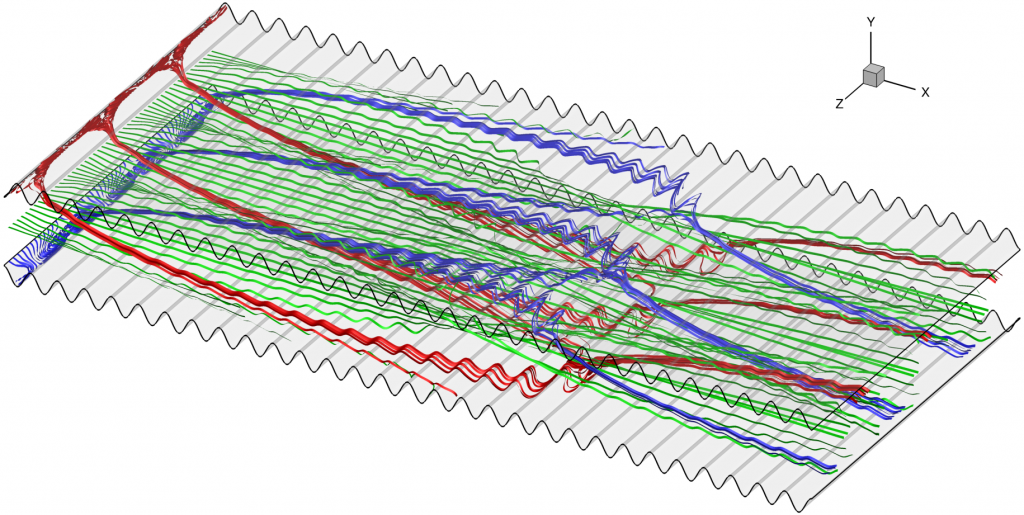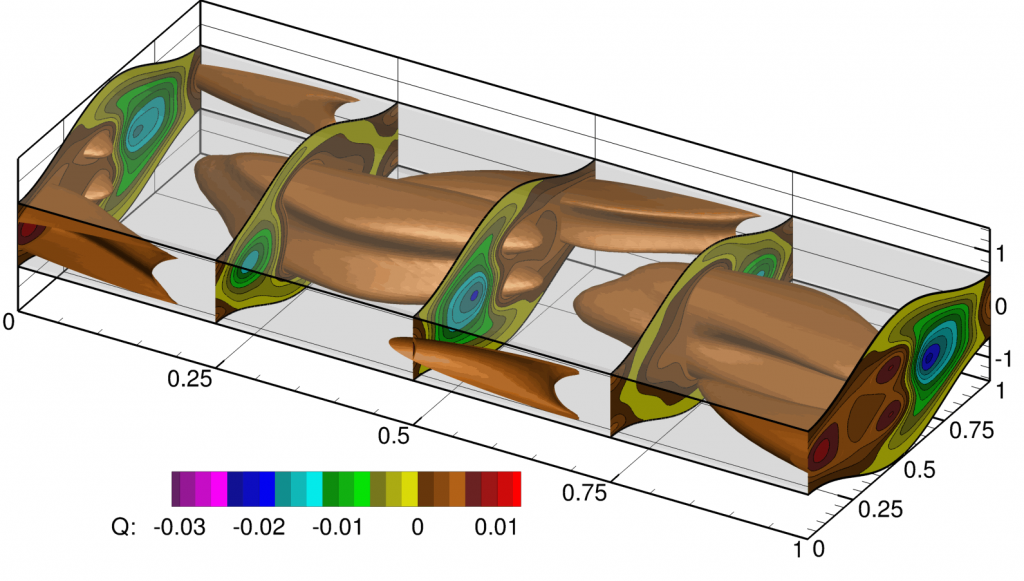Nektar++ and hydrodynamic stability in undulated channels
Nektar++ has been used to study various forms of hydrodynamic instabilities arising is a flow through a channel with corrugated walls. Stability analysis has been performed using direct numerical simulation and tracking growth, or attenuation of the unstable modes.

We were able to show that, for a range of geometries, and in the case of large-scale wall undulations applied parallel to the streamwise direction (lines of constant wall elevation are perpendicular to the flow), the centrifugal instability caused by the streamline curvature dominates the stability of the flow preventing the onset of travelling waves (Gepner & Floryan, Journal of Fluid Mechanics 2016).

By changing the flow direction, such that lines of constant wall elevation become parallel to the flow, the flow becomes susceptible to destabilization at a much lower values of the Reynolds number (~60). Interestingly such configuration offers some drag reduction in relation to the plain Poiseuille flow. With the use of direct numerical simulation we were able to show that the nonstationary flow, resulting from nonlinear saturation of the unstable mode, retains drag reducing properties for values beyond the critical Reynolds number (Yadav et al., Physics of Fluids 2017).
